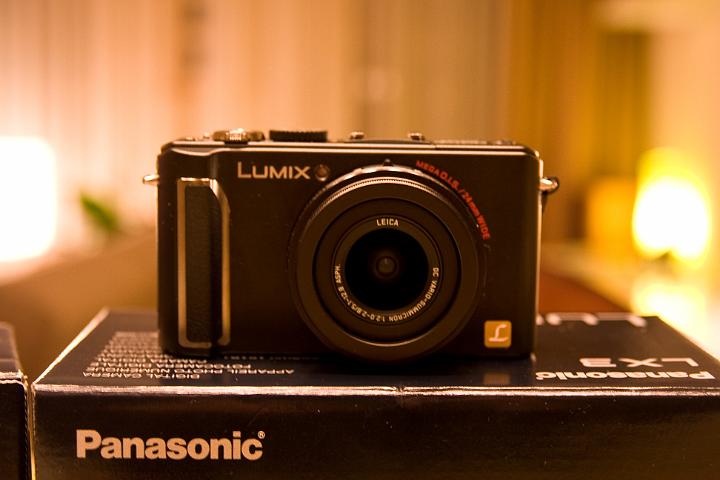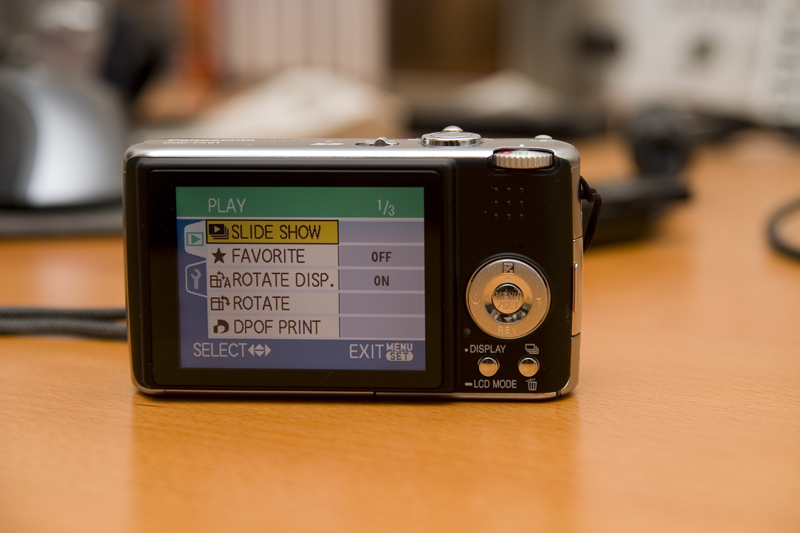Canon Eos 33 and Eos 100 Analogue
The Canon Eos100 was my first Canon Eos Camera. It replaced my Canon T60 camera. I bought it around 1991 when I was parttime working at the photo department of the largest department store (V&D) in the netherlands. I worked with 2 professional educated photographers and they learned me a lot about photography. The Eos 100 was one of the first Prosumer camera's and it is the currents 40D granddad. The Canon Eos line around that time looked like this:
Eos 1000 consumer camera
Eos 100 prosumer camera
Eos 10 advanced Semi pro
Eos 1 Professional camera
The main advantage of the Eos100 over the Eos1000 was:
Super silent belt drive and infrared sensors for film transport
Extra dial on the back of the camera (still on todays 30/40D)
6 zone evaluative/centre metering
2.5 frame/second motor drive
metal housing and metal lens mount
I still have this camera and I even sometimes use it for black/white and Positive Fims. I use it with a Sigma 28-105 2.8-4.0 lens
When Digital DSLR was starting to become popular, everyone was dumping their analoge camara's. So I got a mint Eos 33 from a professional photographer. I have used it for about 2 years and it is a fantastic camera. It eventually got replaced by a Canon 10D.
Canon Eos 10D
When the Canon 30D came out I was a bit dissapointed by the lack of extra features compared to the 20D. However I still had a analogue Eos33 and a digital Minolta Dimage Z1. So it was time to step into the digital age. When I walked into the store I was about to get a Eos 30D, a Sigma 17-70 and a Sandisk Ultra II 2.0Gb. I was still not sure about the 30D. The 30D was a fine camera, but it was featurewise so close to the 20D wich was on sale, thus a lot cheaper. Fortunately there was also a mint second hand 10D at a resonable price. For me a good step to get into the Digital learning curve. So I descided to get the 10D, the Sigma 17-70 and the memory card. And all together it was cheaper than the 30D body.


Canon Eos 40D
Now the 40D was exactly what I was looking for. Actually it was all that the 30D should have been. The 10D was a fine camera and the output was excellent. Although it was only 6MP, the pictures have that film like look, unlike the 20D/30D wich seem a bit flat to me. I really liked the "pop" and 3D look of the 5D's pictures. And I was pleased to find out that the 40D's output was just as good as the 5D. Of course it lacks the excellent noise free images at higher ISO's of the 5D as well as the higher resolution. But it was close enough in good light conditions.
I have used the 10D for almost 2 years, and I must say it still was a vey fine camera. It was however showing its age especially at some points:
very slow writing speed to the CF card
slow startup
small LCD screen
AF a bit inacurate when shooting sports
no spot metering
no ISO indicator on the LCD screen of viewfinder
compared to a 35mm SLR, a very small vieuwfinder
Still the 10D was excellent and I have made excellent pictures with it. But the 40D was a major improvement, excpecially on the 10D.
Some of the new features were:
Live vieuw
Spot metering
better flash
Faster FPS
Mid tone dynamic range
huge LCD screen (could have had more pixels though)
More accurate AF
Bigger and faster buffer
ISO displayed on top LCD and viewfinder
TTL II support (on the 20/30/40D but not 10D)
Bigger and brighter viewfinder
The actual list of improvemens are even bigger, but these were the most important improvements to me. I was a bit sceptical about the use of live view, but I have acutally used it a couple of time. I works okay and in some situations it is actually usable.




Sigma 17-70 2.8-4.5 DC Macro
I have had several Canon and Sigma lenses over the past years. From the 1st generation Canon 35-70 to the Canon 75-300 USM and a Canon 28mm MkII. I also have had several Sigma lenses, including the 28-105 4.5-5.6 (on my Eos 100 now) and the Sigma 24mm and a Sigma 28-108 F2.8-4.0. This lens I have used on the Canon Eos100 as well as the Eos33.
Unfortunaltey I have never been lucky with Canon lenses. The older ones from the early 90's were fine, but several of my latest Canon lenses al gave me quality problems. I have send several lenses to Canon repair. The 75-300 USM has been to repair 3 times.
So now I mainly use Sigma lenses, Canon bodies and Canon flashes. Now back to the Sigma 17-70
This is in my opinion the best walk around lens you can buy it you have a Canon APC 1.6x camera. It has excellent optical perormance as well as the right range (28-112 in 35mm language). The only problem is that F2.8 very quickly becomes F3.5 when you zoom in. And it has no HSM, although the AF motor is reasonably quiet. Also the AF scale is pretty small, so the AF motor does not have to move the AF ring a lot. Still a HSM motor would have been nice.
Lens name Sigma 17-70 2.8-4.5 DC Macro
Construction 12 groups, 15 elements
Minimum focus 20 cm
Filter size 72mm diameter
The only better lens is the Canon 17-55 2.8 IS. Unfortunately it is a bit short at 55mm and also it is twice as expensive as the Sigma. So unless price and the range are no problem for you, this is the best lens. Otherwise save a lot of money and get the Sigma.
The other options for 1.6x camera's are:
Canon 18-55 kitlens, not bad but too short, too cheap and slow AF
Canon 17-85 IS, not bad, but massive distortion at 17mm
Canon 17-55 2.8 IS, overpriced and at 55mm a bit short, but the best optical performance.
Sigma 18-55 2.8 EX, good lens at a good price, but at 55mm a bit short
Sigma 17-70 2.8/4.0, good optical quality, good build quality at a good price. Unfortunately no HSM.
Sigma 18-200 OS , This is obviously a compromise, but it seems optically reasonably good and also offers Optical Stabalisation. And it all only costs about 600 Euro's.
Still the 17-70 is an excellent lens and the best compromise of all the lenses mentioned above.

Also all Sigma lenses come with a sunhood and all EX series even a carring bag.
Sigma 70-200 F2.8 DG EX HSM
This lens I have used on several bodies, including the Eos33, 10D and now on the 40D. It is definatley one of the best Sigma lenses they ever made. It is very sharp, exceptionally build and the AF is very fast. Only at 200mm it is a bit softer.
The sigma is deliverd with a sun hood, a proper bag and a tripod mount.


Sigma 10-20 EX DC HSM
This wide angle lens gives you the oppertunity for some fanatastic wide landscape fotos as well als artistic possibilities. The 10-20 range is especially buid for 1.6x cameras (hence the DC indication) and has a range of 16mm-32mm compared to 35mm film camera.

Unlike the canon 10-22 it is delivered with a bag and a lens hood. This makes the price difference even bigger with the Canon 10-22.
Lens name Sigma 10-20 F4-5.6 EX DC HSM
Construction 10 groups, 14 elements
Minimum focus 24 cm
Filter size 77mm diameter
Unfortunately this lens sometimes suffers from bad QC and I had to exchange a brand new one, because it was soft on one side. But if your sample is perfect, it is a fantastic lens.
LowePro Micro trekker 200
The Lowepro Micro trekker 200 is a fantastic bag. It fits all my gear and is even when fully loaded a pleasure to carry on your back.


Panasonic DMC-LX3
This is my latest camera. It replaces the Panasonic DMC-fx01. Although this was a fine camera, the difference between the EOS-40D in less then prefect conditions was too big. Apart from the fact that I was looking for a camera that could record movies in 720P HDTV. Now the LX3 came as a bit of a suprise. It has all the things you want as a DLSR owner of a second camera:
A reaonsably comapct body
A zoomlens with 24mm wideange and a 2.0 apperature
A larger than normal sensor with 10Mpixel
A good low noise performance on low light an high ISO
RAW support and modest approach to noise reduction
An external flash shoe
720P/24fps widescreen Video mode
Now this is without a doubt a very good and smart camera. Even the all time favourite the Canon G9/G10 gets beaten by Panasonics innovative and different approach when designing the LX3. A very good review can be found here: http://www.dpreview.com/reviews/panasonicdmclx3/

Panasonic DMC-FX01
This was my first digital point and shoot camera. It is now replaced by my Panasonic DMC-LX3. I mainly use it in places wehere it is inpossible to use my DSLR. Like on the piste during witersport, on the boat and during concerts. The Panasonic Lumix DCM-FX01 is a 6.0Mpix camera with a Leica 3.6x zoom lens it is equivalent to a 28mm-105mm lens. The 28mm wide angle is very usefull indoors and also when taking landscape.
The camera also had the possibility to take 640x480 movies with sound. The only drawback is that zooming is not possible during recording. So you have to zoom in before you start recording. I import all the movies into Adobe Premiere Elemenst, together with the DV movies. Although the difference in quality between this camera and DV is obvious, the quality is good enoung to mix these movies.
I am well pleased with this camera, because of the following reasons:
excellent performance in good light conditions
28mm wide angle lens
good scharp optical performance
usable programs (snow/portrait etc)
very small but still good to operate
strong and good build metal housing
Of course it also has its weak points
very strong chroma noise at 400 ISO
very strong color bleeding at 400 ISO
zooming not possible while recording movies
some vertical banding when filming in light an contrasty environments



Manfrotto 190B Tripod and RC 485RC4
A good tripod is a must have for a photographer. Because the Canon 40D and the Sigma 70-200 weigh a lot togehter, you need a good tripod. The Manfrotto is build to last forever. My local store had a good offer on a 190Pro and a 485RC4. I did not like the screw locks, since they are hard to oprate with one hand. So i descided to take the 190ProB and combine it with the 485RC2.
The 190Prob has a neat feature. Its verical colum can be mounted horizontal and the legs can be set very wide. This allows you to get a very low angle.


Manfrotto 691 Monopod
This monopod I mainly use with my Sigma 70-200. It has the same quick release as the 485RC4 on my tripod. So I can quickly change between my tripod and monopod.
© Eelco van Vliet
















